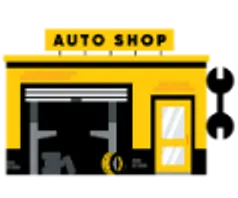
Trusted repairers
All workshops are MTA approved, so you know your car's in safe hands. All work is covered by our 6-month / 10,000km warranty.

NZ's #1 automotive repair booking site.






Having your wheels aligned correctly is an important part of keeping your vehicle performing optimally.
Properly aligned wheels ensure your car handles properly, and therefore increases the life of your tyres. Ever felt that irritating symptom of your car constantly pulling to one side? That’s the cause of misaligned wheels.
It’s recommended that you get your wheels aligned every 10,000km or 6 months, or whenever you experience a change in the driving or handling of your vehicle. It can happen gradually from everyday driving, or from incidents like hitting a curb or pothole.
The cost for a wheel alignment should be around $50 for smaller vehicles and up to $120 for larger vehicles. Costs are usually slightly more for 4WDs and SUVs.
A wheel alignment doesn’t just mean adjustment of the wheels, but rather adjustment of a vehicle’s suspension. It is designed to alter the angles of the wheels to produce the optimum contact between the vehicle’s tyres and the road.
Aligning a set of wheels is a complicated procedure and involves perfecting a set of four separate angles known as the camber, toe, camber and thrust.
CAMBER: The Camber refers to the angle of the tyre when viewed from the front of the car. If tyres are angled too far in or out, this tilt, or camber, means they will need to be adjusted.
TOE: When viewed from above, the toe alignment is the degree to which your tyres are angled inward or outward.
CASTER: The caster refers to the steering axis when the vehicle is viewed from the side, and specifically how far forward or behind the steering axis is to the vertical axis.
A positive caster means the steering axis is tilted toward the driver. Negative caster means the steering axis is tilted toward the front of the car.
THRUST: The thrust angle is the angle of the rear axle in relation to the centreline of the vehicle. Whether the rear axle is parallel to the front axle can be checked through inspection of the thrust angle.
Adjustment of these components and their angles will bring your vehicle back to what it was like when it was brand new.
Having incorrectly aligned wheels can cause a number of issues that are potentially dangerous, and can result in wear and tear to components of the suspension system and to tyre tread.
Your tyre’s performance and ability to grip the road can be reduced with uneven tread wear and can be a potentially serious safety problem.
Misaligned wheels can lead to the following problems:
During a wheel alignment, the car’s suspension will be put into its proper configuration.
To do this, a mechanic will use an alignment machine. An alignment machine includes devices that are clamped to the wheels of the car and which make precise measurements that assist the mechanic to make adjustments to correct the camber, toe, caster and thrust angles.
Expect to pay between $50 and $75 for a two-wheel alignment, and double that for a four-wheel alignment. Many shops also recommend getting a tire rotation at the same time, which simply means moving tires from front to back and side to side, in turn promoting an even wear pattern
Every six months or 10,000 kms, whichever comes first.
Having incorrectly aligned wheels can cause a number of issues that are potentially dangerous, and can result in wear and tear to components of the suspension system and to tyre tread.
Your tyre’s performance and ability to grip the road can be reduced with uneven tread wear and can be a potentially serious safety problem.
If you need a Mazda mechanic, we've got you sorted.

View other services
Vehicle Makes
Why book with My Auto Shop?

All workshops are MTA approved, so you know your car's in safe hands. All work is covered by our 6-month / 10,000km warranty.
We provide transparent, upfront pricing and quotes for hundreds of services and repairs. Book with confidence.

Get prices and book online 24/7. We come to you. Easy as.
With hundreds of MTA approved garages nationwide, we have one just for you
View all garages